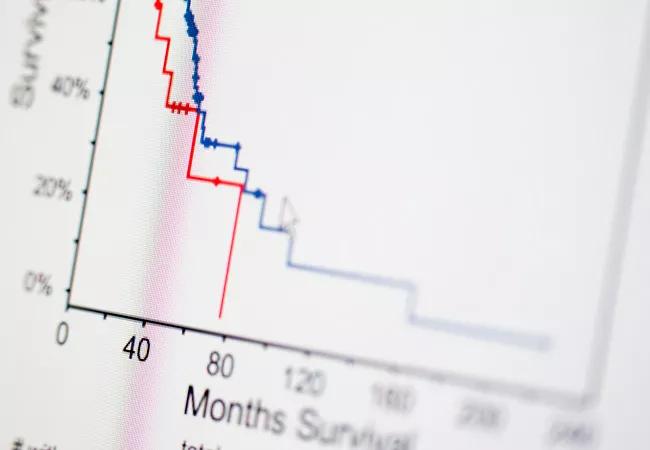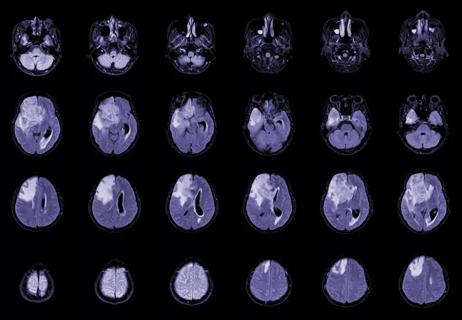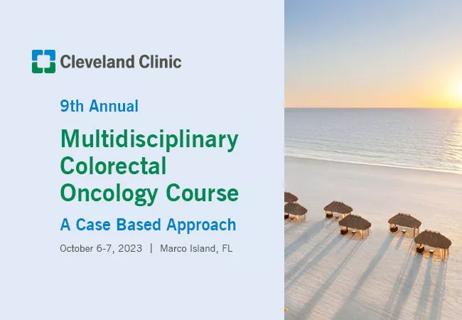Better prognostic models would aid precision treatment

New guidelines drafted by a Cleveland Clinic-led expert panel should speed the development and approval of advanced statistical tools to more accurately predict cancer’s course in individual patients. Armed with better prognostic information, physicians can provide increasingly personalized cancer treatment, thereby improving survival rates and outcomes.
Cleveland Clinic is a non-profit academic medical center. Advertising on our site helps support our mission. We do not endorse non-Cleveland Clinic products or services. Policy

The new guidelines, published January 19 in CA: A Cancer Journal for Clinicians, define for the first time the standards that cancer risk models or risk calculators must meet to gain the endorsement of the American Joint Committee on Cancer (AJCC).
“The guidelines will dictate which predictive tools receive AJCC approval and then move forward into clinical use,” said Michael Kattan, PhD, MBA, Chair of Cleveland Clinic’s Department of Quantitative Health Sciences, who led the group of healthcare statistical specialists that developed the new standards. “This is a paradigm shift in cancer treatment. When these improved risk models are available to physicians, the way patients are treated and counseled will be forever changed for the better.”
The AJCC created and oversees the traditional anatomic staging system that physicians worldwide have used for decades to classify patients’ solid tumors and guide treatment. The familiar TNM staging system — which is based on the local extent of the cancer at the site of origin (T), the degree of metastatic regional lymph node involvement (N) and the presence or absence of distant metastasis (M) — is simple and easy to use, enabling its global adoption.
But that need for simplicity and the emphasis on anatomic measures restricts the TNM classification system’s ability to include other prognostic elements that would improve its accuracy in predicting individual patient outcomes. Many oncologists believe that the system is outdated, lumping all cancer patients into one of four stages that do not account for individual differences in risk factors, such as genetics, age, gender and lifestyle. As a result, a patient who is a “bad” stage 3, for example, might be undertreated for a cancer that is likely to metastasize. Conversely, a “good” stage 3 patient might receive treatment that is unnecessarily aggressive, potentially causing harmful cardiac, renal or other side effects.
Dr. Kattan has firsthand experience with the relative inaccuracy of cancer staging; he was diagnosed with stage 4 Hodgkin lymphoma years ago while in graduate school, working on his doctorate of philosophy in business administration. “As I talked to my oncologist and dug a little deeper, he acknowledged that I wasn’t a classical stage 4,” Dr. Kattan said. “I was being treated as a 4, but he described me as a bad stage 2. It was that experience of dissecting cancer staging as someone who builds statistical formulas for a living that showed me it wasn’t the way to do it. It’s too coarse, with broad variability within an individual stage. It’s not as tailored as it should be.”
Dr. Kattan survived his cancer and changed his career path from financial prediction to healthcare, developing statistical risk prediction tools for cancer and other diseases and advocating for their inclusion in patient counseling and clinical decision-making.
Recognizing the limitations of the current cancer staging system, the AJCC committed to expanding classification to increasingly incorporate risk stratification. The goal is to provide reliable, pragmatic cancer risk models and calculators for the major cancer sites that incorporate tumor-related and patient-related predictive factors, in addition to anatomic stage. In preparation for the changes, the organization invited Dr. Kattan and colleagues from 15 leading medical centers to devise the criteria by which AJCC will judge existing or newly built risk models for possible approval.
The panel members discussed which characteristics would be essential for a high-quality prognostic model or a computer-generated risk calculator for cancer patients. The 16-item checklist they eventually compiled emphasizes performance metrics, implementation clarity, validation and clinical relevance. To qualify for AJCC approval, the models or calculators must be able to accurately predict the probability of overall survival, disease-specific survival or disease-specific mortality.
Now that the guidelines have been established, researchers around the world will be invited to submit their cancer risk formulas for review by AJCC. Existing prediction models for breast, colon, prostate, lung, melanoma, and head and neck cancer will be evaluated first for possible incorporation into the Eighth Edition of the AJCC Staging System, which will be published in 2016. Future editions will include clinically relevant, approved prognostic models for other cancers.
As individualized outcome-predicting tools become more robust and accepted, Dr. Kattan expects that reliance on classical anatomic-based cancer staging will decline.
“As these risk models get more into practice and clinicians become more comfortable with them and understand their value, the staging system in my view becomes much less relevant,” he said. “Staging probably will become just another variable that gets used in combination with other information. It will no longer be the ultimate classifier.
“That’s what is happening with prostate cancer, where more than 100 models for all sorts of outcomes are now available,” though not yet AJCC-certified, Dr. Kattan said. “You’ve got these other test results and you have the stage and you adjust the prediction for each of those things.”
Ultimately, the advent of personalized cancer risk prediction tools should clarify decision-making for patients and their physicians, Dr. Kattan said.
“It’s not unreasonable to think that someday we’ll have the ability to counsel patients about their predicted benefits and harms as a consequence of their treatment of choice,” he said. “You can envision a table displaying various treatment options and outcome predictions for each. With such a tool, a patient in partnership with their physician can make a logical, much more informed choice. It removes a lot of uncertainty that plagues patients now. This is a great example of how precision medicine will help cancer patients in the not-so-distant future, which is what I wanted for myself many years ago.”

Timing and type of side effects differ greatly from chemotherapy

Dedicated multidisciplinary teams support 84 ultra-rare cancers

Sessions explore treatment advances and multidisciplinary care

New research from Cleveland Clinic helps explain why these tumors are so refractory to treatment, and suggests new therapeutic avenues

Combination of olaparib and carboplatin results in complete durable response for a patient with BRCA2 and “BRCAness” mutations

Early communication between oncologists and ophthalmologist warranted

Case-based course delves into latest treatment approaches

Long-term relationship building and engagement key to gaining community trust